
What Is Click-Through Rate?
Click-through rate (CTR) is a special metric used to measure the performance of various online marketing campaigns like Search Engine Optimization (SEO), Pay-Per-Click (PPC) advertising, Email Marketing, Social Media Marketing (SMM) and many others. It is basically a measure of how many internet users click on a link out of all the internet users who see the link. The link can take many forms. It can be an organic search result, paid search result, a social media ad or a link sent via email to a list of subscribers. In the case of SEO, CTR takes into account how many internet users view a search result, and how many of them click on the result in order to be directed to a website, blog or any other internet resource.
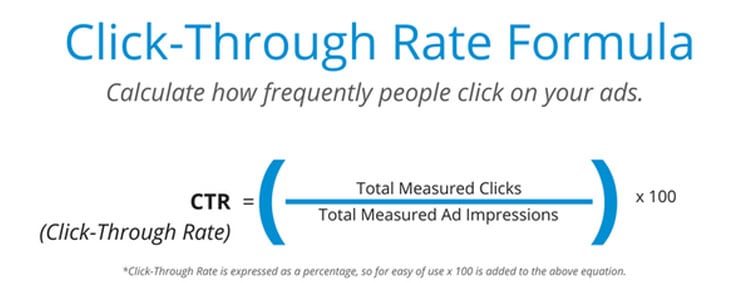
CTR is often brought up in relation to organic search and SEO because the latter is one of the most commonly used forms of online marketing. Because of this, something known as ‘organic click-through rate‘ arises. Now, it’s widely assumed that having a high click-through rate can boost your ranking on search results. However, this is the subject of continuous debate as some people refute this claim. This then brings about the question, “Does click-through rate really matter?” If CTR does matter, how can website owners and online marketers improve their CTRs in order to rank higher on organic search results?
For most people, click-through rate is very important as it is an indicator of how people are responding to their visibility on search results. It does not make sense for hundreds of thousands or even millions of people to see your search result, but nobody clicks on it. If this was the case, featuring on search results would be a waste of time and money. Click-through rate is very similar to ‘conversion rate’ which is a metric used to gauge the performance of typical sales and marketing campaigns. Conversion rate considers the number of people who visit a particular business and how many of those people proceed to make a purchase. This is not so different to click-through rate as the number of viewers and visitors are more or less the same.
So, investing in CTR can have a direct impact on not only your SEO ranking but your ROI as well. Choosing to view CTR as a trivial ranking criteria is both risky and dangerous for your business or brand.
The In-Depth Relationship Between CTR and SEO
Most people can agree that the main purpose of search engine optimization is to improve online visibility and attract traffic to a website. Traffic is really important as this is what translates into actual sales. But, getting traffic is not that easy, especially in the current world we live in. Competition is stiff. Almost everyone out there today understands the importance of having a powerful online presence. Competition to feature prominently on search results is at an all-time high. Websites are rapidly replacing each other every day at the top of search rankings. The websites that appear at the very top are thought to be the ‘most-optimized’. But, this is not always the case.
The true measure of optimization is not ranking high on search results. You can rank high on search results, but very few people visit your website. This means that you are not really optimized. For this reason, the true measure of optimization is traffic. Traffic, as opposed to ranking or impressions (the number of people who see your result), is the ultimate or true measure of optimization. Traffic is measured using the click-through rate metric. This means CTR is a very essential part of SEO.
Does CTR Impact Organic Search Ranking?
We already know that organic search ranking can impact CTR in one way or the other. However, you may be wondering whether CTR can have an impact on organic search ranking. Can this relationship go both ways? Do websites with better click-through rates rank higher on search results? This is not an easy question to answer as it heavily depends on the kind of algorithms that Google and other search engines use. Google ultimately decides which metrics impact search engine results. Whether or not CTR is one of those metrics, and to what degree it has an impact on search ranking is the main subject of the discussion we are currently engaged in. We can get some clues on how Google treats CTR by looking at various studies done in the past.
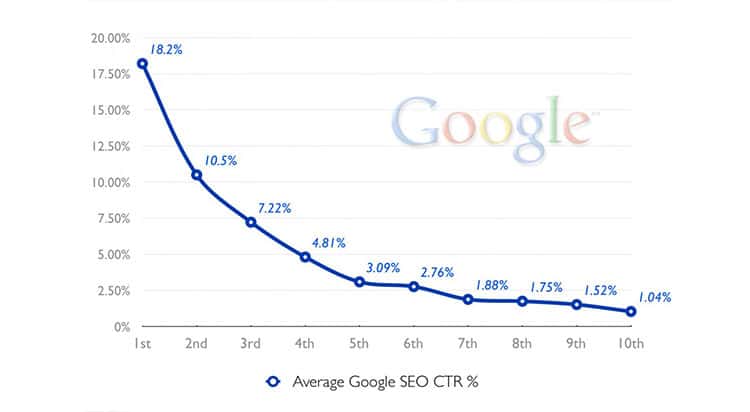
A 2016 study that relied on Google’s Webmaster Tools to evaluate the relationship between CTR and search ranking established that people do indeed click more on the top ranking search results more than the other subsequent results. This is expected as most internet users click on the first, second and third results respectively on search engine results pages. The study noted that the click-through rate gradually decreased as you moved from position 2, 3, 4, and so on. So, the study concluded that the number of impressions or views were directly proportional to the number clicks and by extension click-through rate. Again, this information is not surprising as it has already been established that user attention reduces as they move down search results.
The Chicken Vs. The Egg Problem
The matter of whether click-through rate is used as a ranking factor brings about what is known as a ‘chicken vs. egg’ problem. Which comes first? The chicken (search ranking) or the egg (click-through rate)? Which metric/variable contributes more to the other? Or, are they both equal metrics that are codependent on each other? Numerous experts have made attempts to break this riddle using highly-technical theories and methodologies that we will not delve into in this publication. However, the bottom line is that CTR and organic ranking have a really close relationship or bond that cannot be ignored. It’s just like a chicken and an egg.
So, concentrating your efforts on improving your CTR is not a bad thing at all. It’s actually a very wise move as we have already established that CTR and organic search ranking go hand in hand. Your search ranking is less likely to fall or decline if you have a high click-through rate. This is a fact. You can measure your website’s click-through rate using various analytical tools on the web. Essentially, if you are ranking low on search results, but still having a pretty high CTR, this is an indicator to Google and other search engines that many people are indeed looking for your content. When Google realizes this, they will have no choice but to boost your ranking on search results in order to meet the needs and expectations of their users.
Google’s View of CTR
Google has over the years shared numerous details about its take on click-through rate. For starters, Google has confirmed using CTR as a search ranking criteria. However, it has not been so forthcoming with details on how CTR really influences search results. Our guess is as good as yours on how much click-through rate affects search engine results. But, nobody can stop us from making an educated guess.
So, we already know that the top search results benefit from getting a lot of clicks. However, a scenario can arise where a lower ranking result (like position 3) has a higher click-through rate than a higher ranking result (like position 1). This is quite possible. Now, we can expect that Google’s search algorithms will take note of this fact sooner or later, and the big question is – what action will they take. This is a case of a result outperforming its ranking position on search results and getting more clicks than higher ranking results. Well, Google is running a business and it cannot afford not to meet its clients’ needs. So, it would make a lot of sense for Google to bump up the ranking of the search result with a higher click through rate in order to ensure that they stay in business.
It’s important to note that click through rate is not the only metric that Google uses to rank search results. There are important metrics like content, keywords, bounce rate, meta descriptions, loading times and many others. A website search ranking can be negatively affected if any of the above metrics do not align with Google’s guidelines. So, it’s possible for a website to have a high CTR, but have a low search result ranking due to poor optimization of any of the above metrics. Essentially, having a high CTR is good, but it’s overall effect on your search ranking is dependent on other related factors. CTR only helps Google to gauge the level of interest people have in your search result. It cannot compensate for any other optimization shortcomings that you may have such as poor content or broken links on your website.
So, we can confidently say that CTR can indeed help you to move up the ranks on search results. But, this is only if your website is properly optimized according to Google’s strict standards. Many researchers have found this to be true. It is not rare to find websites on search results that outperform their ranking positions. Concentrating on improving your click-through rate is therefore a wise move for two reasons. First, you can improve your ranking on organic search results (and a higher rank will get you even more clicks). Second, when more people click on your search results, you will get more traffic coming to your website and potentially make more sales from the increased visitors you get.
How To Improve Organic Click-through Rate
So, now that we have established that click-through rate does indeed matter, the next step is figuring out how you can improve your click-through rate to get more traffic coming your way.
A quick heads up though – increasing organic click-through rate is by no means an easy task. SEO experts are paid huge amounts of money everyday to tackle this challenging task. Sometimes, teams of dedicated online marketers are required to collaborate in order to effectively and efficiently boost this metric. Also, there is the issue of the ever-changing search algorithms that get updated every single day. Keeping up with Google’s algorithm updates requires a lot of time and effort. Implementing the necessary changes required to boost CTR is also another time consuming and tedious process.
It’s not all bad news, however, as there are certain proven tactics and strategies that you can use to improve your website’s click-through rate.
1. Optimize Your URLs
URLs are the addresses or links that people use to get to your web pages. These links play an important role in your overall SEO campaign. Poorly structured links can negatively affect your SEO campaign.
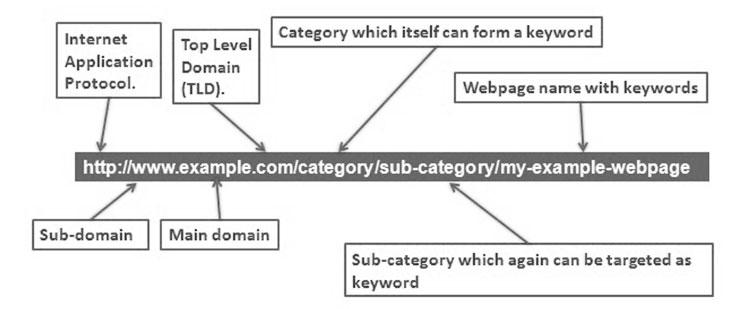
In regards to CTR, URLs also play a significant role. Clicks cannot happen when there are no links to click on. Also, clicks cannot go through if links are broken or poorly. This means that your CTR heavily depends on the effectiveness of your URLs. All your URLs should be simple and precise. They should be attractive to the search engine users who see them on search results. A poorly structured URL can make a user weary of clicking. Some best practices that you can follow when it comes to URLs include:

- Use descriptive URLs
- Avoid stuffing too many keywords in your URL. This makes your website look spammy and unprofessional.
- Fewer URLs for your website is better. This means that you should not create web pages on your site that you don’t necessarily need.
- Control/remove weird symbols and punctual characters in your URLs.
- Match URLs to related page titles where possible.
- Shorter URLs are always better than longer URLs.
- Remove dynamic parameters from your URLs
- Include vital and informative keywords in your URLs.
- Make your URLs as human-readable as possible.
These are just a few things you can do to make your URLs (and by extension your search results) more attractive and appealing to search engine users. The more attractive your search results are, the higher your click-through rate will be and the more traffic you will get.
2. Optimize Your Titles
Creating titles for your web pages may seem pretty easy and straight-forward, but this is not the case. Getting the title right for just a single web page on your website can be nerve wracking and outright stressful. Titles carry a lot of weight when it comes to CTR. Your choice of title will ultimately determine how people will respond to your search result. Some people may not like the title you used. Frankly, it’s hard to please everyone on the web. The best thing you can do is try to appeal to the largest group of people possible.
Some tips for creating appealing titles are:
– Be relatable.
– Think like a typical user who is searching for something.
– Leverage emotions to prompt users to click.
– Include promises of solutions or answers in your title.
Basically, coming up with effective titles is more of an art than a skill. Experience in copywriting can come in really handy in optimizing titles for your web pages, and in turn your search results. Good titles can have a huge and drastic impact on your click-through rate.
3. Optimize Your Meta Description
Apart from your URLs, you also need to optimize your meta description. A meta description is basically the brief information that shows up beneath your search result. This information includes some of the content found on the web page the search result links to. While meta descriptions do not directly impact search rankings, they can have a huge impact on CTR which then influences ranking. Having a good meta description can help you draw more users from SERPs to your website. The brief information in your meta description should be clear and easy to read. It should prompt a user to click on your search result with ease.
With that said, it’s important to optimize all your meta descriptions. You should avoid having blank or duplicate meta descriptions. You should also avoid using meta descriptions that have grammatical or spelling errors as this can put off users. Good meta descriptions give your website an upper-hand in search results. You get more click throughs when you use appealing meta descriptions. Search engine users look for value in your meta descriptions before clicking on your links.
Step by Step Click Through Rate Audit
Step #1 – Login to Google Search Console. If you have not already signed up for an account, you can do that here.
Step #2 – Select Overview > Click on Full Report
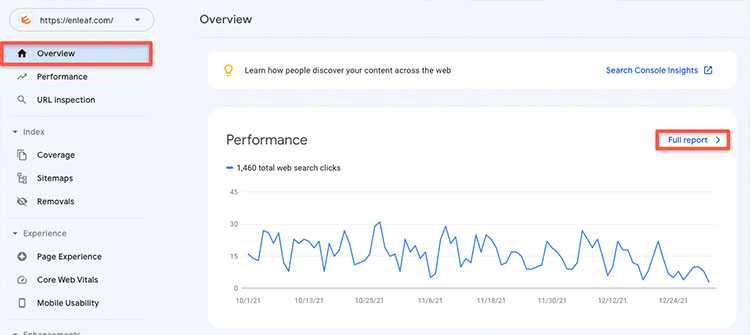
Step #3 – Set the date period to 6 months and make sure that the Total clicks, Total impressions, Average CTR and Average position options are selected.

Step #4 – Because we want to sort our click through rate page by page, we need to sort the pages. Select pages, and expand the Rows per page to 100 to see more of the website’s pages.
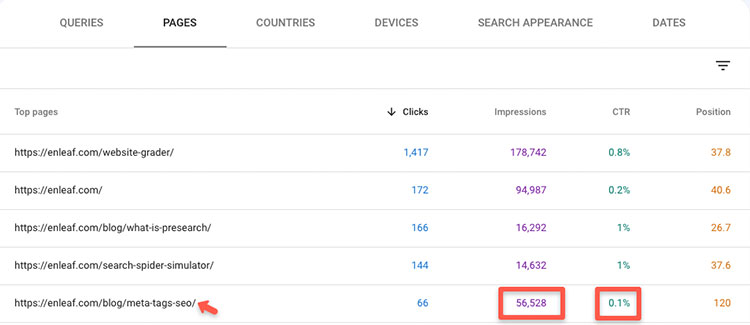
Step #5 – Now that we have a list of pages, we want to identify pages that have a high percentage of impressions, but low Click Through Rate. Once you have identified a target page, click on the page’s URL to reveal more data.
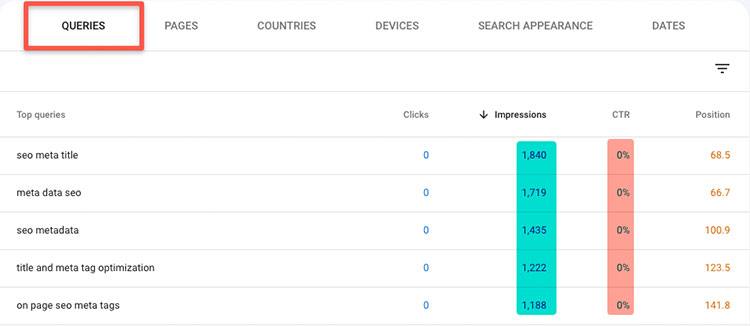
Step #6 – Now that we have identified a target page, we want to examine the keywords on that page that get a lot of impressions but few clicks.
Step #7 – You want to compile a list of top 10-20 terms that have a high impression rate and a lot of CTR.
Example:
- seo meta title
- meta data seo
- seo metadata
- title and meta tag optimization
- on page seo meta tags
- metadata seo tips
- meta tag for seo
- what is meta data seo
- meta tag tricks
- list of meta tags for seo
- how to use meta tags for seo
- how to create meta tags for seo
- seo meta tags
Step #7 – Go to a cloud generator tool such as this one here and add your list of keywords to identify what terms are most prominent among those terms in your keyword list.
Example:
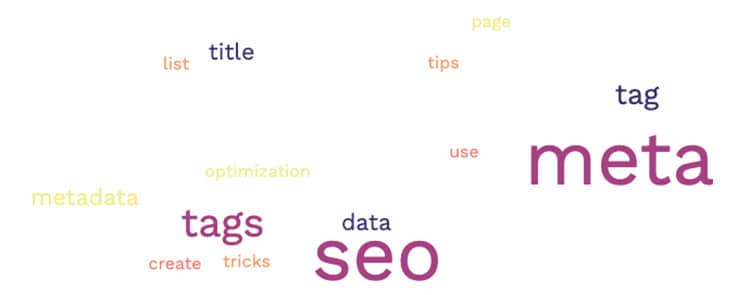
Step #8 – Identify what terms have the greatest weight as well as what terms are not curreting in your page’s title. Use this data to rewrite your website meta title.
Meta Title:
- Original: SEO – how to audit and optimize your meta title and description
- Updated: Meta Tag SEO Tips and Tricks for metadata optimization
Meta Description:
- Original: Properly written meta titles & descriptions help improve a site’s search visibility and your meta tags SEO guide walks you step by step though the process.
- Updated: Meta Tags are an essential part of SEO. In this step by step guide, we show you some tips and tricks for metadata optimization.
Conclusion
Click-through rate is extremely important for SEO, in more ways than one.
Website owners and online marketers work tirelessly to get people to click on their links. These links can be found in emails, social media ads, PPC ads and most importantly organic search results. The main point is to get people to come to their websites and interact with their brands or businesses. CTR is at the center of this entire process.
CTR is a clear reflection of how people are responding to your links, and by extension, your online marketing efforts. You can easily tell whether your online marketing campaigns like SEO, PPC, SMM and email marketing are working by looking at your click through rate. As mentioned above, your click through rate is the true measure of how optimized your website is. For many years, people have assumed that search ranking is the true measure of optimization, but this is not the case.
No matter how you look at this issue or whichever side you are on this debate, one thing that everyone can agree on is that CTR is a very crucial metric in the world of search optimization. Google has confirmed that it uses organic click through rate to rank websites on its search results. Websites with higher CTRs than expected are elevated on search results while websites with lower CTRs are demoted. So, we can confidently conclude that CTR does indeed have a direct impact on search ranking.
